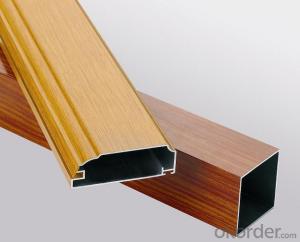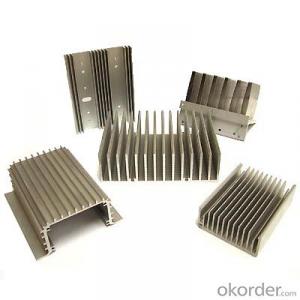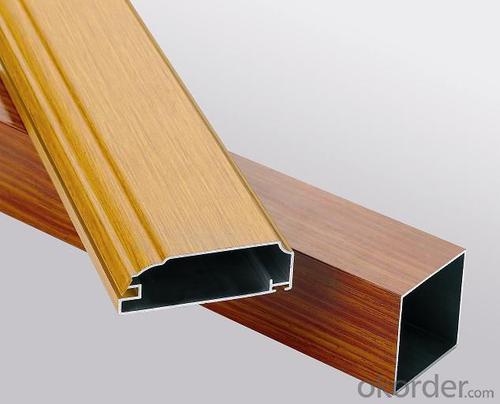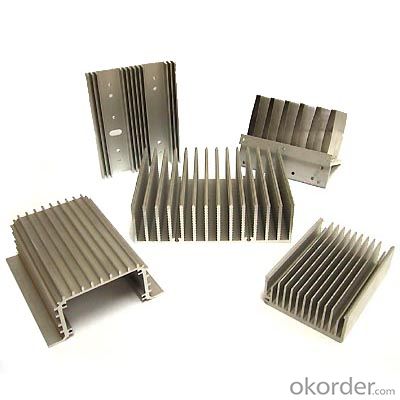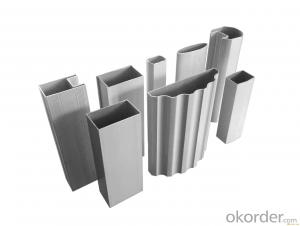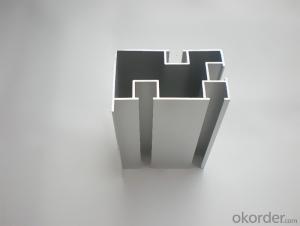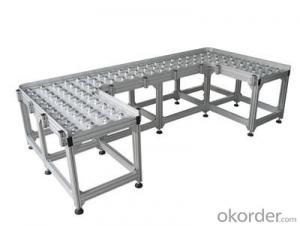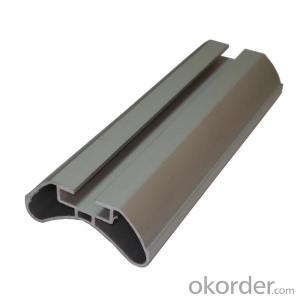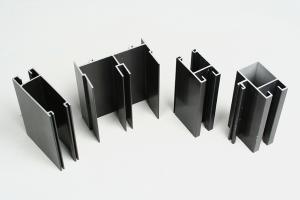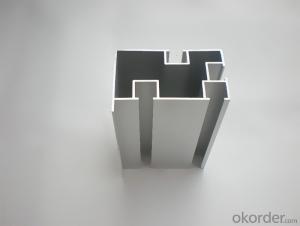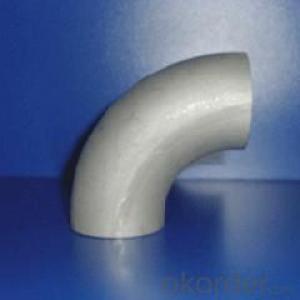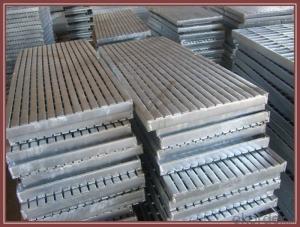Aluminum Alloy Door and Window Profiles - AA6060, 6061, 6063 Aluminum Profile Extrusion
OKorder Service Pledge
OKorder Financial Service
You Might Also Like
Aluminium is a relatively soft, durable, lightweight, ductileand malleablemetalwith appearance ranging from silvery to dull gray, depending on the surfaceroughness. It is nonmagnetic and does not easily ignite. A fresh film ofaluminium serves as a good reflector (approximately 92%) of visible lightand an excellent reflector (as much as 98%) of medium and far infraredradiation. The yield strength of pure aluminium is 7–11 MPa,while aluminium alloys have yield strengths ranging from200 MPa to 600 MPa. Aluminium has about one-third the densityand stiffness of steel. It is easily machined,cast, drawn and extruded.
Features:
Material | Alloy 6063,6061,6005or according to customer’s choice |
Temper | T3, T4, T5, T6 |
Surface | Anodize, electrophoresis, powder coating, PVDF coating, wood grain painting, matted, etc. |
Length | Coating 6.5 meters, Anodizing 6.5 meters, Mill finish 5 meters |
Application | Industrial, electrical equipment(TV set, air conditioner, refrigerator, computer), decoration,construction, transportation |
Custom Made | We can package following with customer's request. |
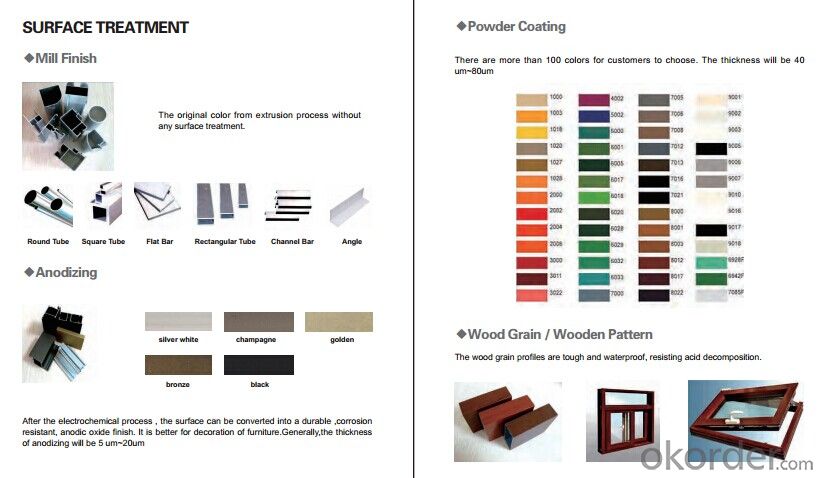
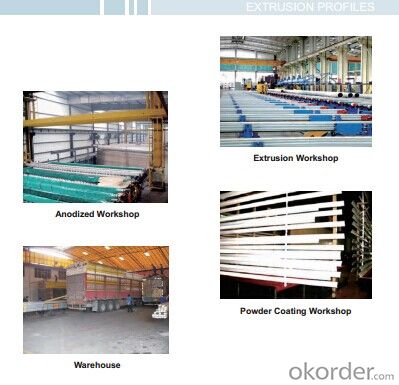
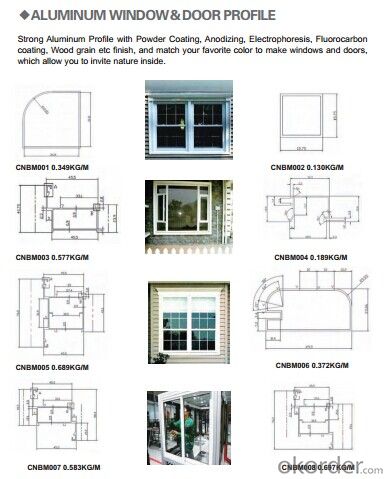
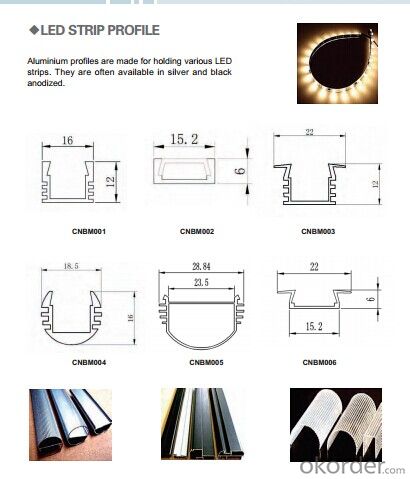
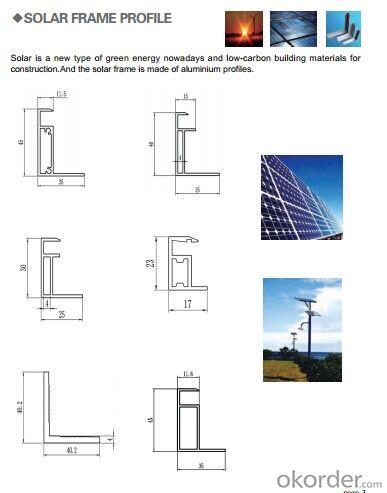
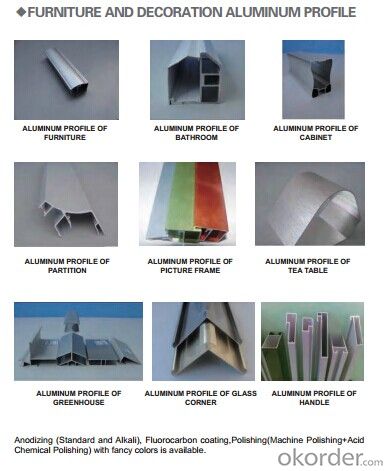
- Q: Can aluminum profiles be used for solar panel installations?
- Solar panel installations can make use of aluminum profiles, which are frequently employed in the construction industry because of their lightweight nature, durability, and resistance to corrosion. These attributes make aluminum an optimal material for supporting and securing solar panels. Aluminum profiles can be easily customized and fabricated to meet specific installation requirements, including roof or ground mounting systems. Furthermore, aluminum possesses exceptional thermal conductivity, enabling efficient dissipation of heat from the solar panels. This characteristic is vital for maintaining their performance and lifespan. In addition, aluminum profiles are commonly utilized to frame solar panels, providing structural support and ensuring stability in diverse weather conditions. All in all, aluminum profiles are a favored option for solar panel installations due to their robustness, longevity, and adaptability.
- Q: Industrial aluminum profiles are generally used in what industry?
- Kunshan Austrian crown aluminum to tell you: mainly used in the manufacture of industrial production, such as automation equipment, covering the skeleton and the custom mold machinery and equipment according to their own requirements, such as assembly line conveyor belt, hoisting machine, glue machine, testing equipment, shelves and so on, electronic machinery industry and clean room with.
- Q: What are the different surface protection coatings for aluminum profiles?
- Aluminum profiles have a wide range of surface protection coatings available, each with unique benefits and applications. Here are some common options to consider: 1. Anodizing: Anodizing is a popular coating method that creates a protective layer on the aluminum surface. It improves corrosion resistance, durability, and aesthetics. Anodized coatings can be clear or colored, offering design flexibility. 2. Powder coating: For durability and versatility, powder coating is a preferred choice. This method involves electrostatically applying dry powder to the surface, which is then cured under heat to form a protective layer. Powder coatings provide excellent resistance to UV rays, chemicals, and scratches, along with a wide range of color options. 3. Liquid paint coating: Another option is liquid paint coatings, which involve applying a liquid paint to the surface and curing it to create a protective film. These coatings offer customization in terms of color and finish, allowing for specific design requirements. 4. E-coating: E-coating, also known as electrocoating or electrodeposition, utilizes an electric current to apply a paint or coating to aluminum profiles. This process ensures a uniform and consistent coating, resulting in excellent corrosion resistance and durability. E-coatings are commonly used in automotive and industrial applications. 5. Ceramic coatings: Ceramic coatings, a newer option, consist of inorganic materials that provide exceptional hardness, heat resistance, and chemical resistance. These coatings are ideal for enhancing performance and lifespan in harsh environments like marine or aerospace applications. When selecting a surface protection coating, it is essential to consider the specific requirements and intended use of the aluminum profiles. Factors such as corrosion resistance, durability, aesthetics, and cost should be taken into account to determine the most suitable option.
- Q: Can aluminum profiles be used in lightweight construction applications?
- Aluminum profiles are definitely applicable in lightweight construction. They possess a lightweight and versatile nature that brings numerous advantages to construction projects. With a high strength-to-weight ratio, structures can be built with less material yet still maintain strength and durability. This makes aluminum profiles an ideal choice for lightweight construction where weight reduction is crucial. Various construction projects, including building facades, interior partitions, roofing systems, and structural frameworks, commonly utilize aluminum profiles. They are particularly favored in industries such as aerospace, automotive, and marine where reducing weight is of utmost importance. Additionally, aluminum profiles exhibit excellent resistance to corrosion, making them suitable for outdoor and high-moisture environments. Their high malleability allows for easy fabrication into different shapes and sizes, enabling customized designs and simple installation. Moreover, aluminum is an eco-friendly material as it can be recycled infinitely without compromising its properties. To sum up, the widespread use of aluminum profiles in lightweight construction stems from their lightweight nature, strength, durability, corrosion resistance, malleability, and environmental benefits.
- Q: This question asks for an explanation of the manufacturing process of aluminum profiles.
- <p>Aluminum profiles are made through a series of processes starting with the selection of high-quality aluminum ingots. These ingots are melted in a furnace and then extruded through a die to create the desired profile shape. The extrusion process involves forcing the molten aluminum through a shaped opening in the die, which gives the aluminum its final form. After extrusion, the profiles are cooled, straightened, and cut to length. They may then undergo secondary processes such as anodizing, powder coating, or painting for enhanced durability and appearance. Finally, the profiles are inspected for quality and packed for distribution.</p>
- Q: What is aluminum profile opening mold, I want to process a batch of aluminum profiles, the other side to open mold fees also expensive, then I can open the mold of things? I don't know the hero for a favor
- Aluminum production process is actually like toothpaste, the liquid aluminum from a specific shape of the mouth squeezed out, cool after becoming a profile, mold that is to do that exit......
- Q: Are aluminum profiles suitable for use as exterior walls in high-rise buildings?
- <p>Yes, aluminum profiles can be used for exterior walls in high-rise buildings. They offer several advantages such as high strength, low weight, corrosion resistance, and ease of maintenance. Aluminum profiles are also known for their durability and sustainability, making them an excellent choice for modern architecture. They can be used in various applications, including curtain walls, window frames, and structural components, due to their versatility and adaptability to different design requirements.</p>
- Q: Are aluminum profiles suitable for use in furniture fittings and accessories?
- Yes, aluminum profiles are suitable for use in furniture fittings and accessories. Aluminum is lightweight, durable, and resistant to corrosion, making it an ideal material for various furniture applications. Additionally, aluminum profiles can be easily fabricated into different shapes and designs, allowing for versatility in furniture design.
- Q: Can aluminum profiles be used for medical equipment or devices?
- Yes, aluminum profiles can be used for medical equipment or devices. Aluminum is a widely used material in the medical industry due to its unique properties. It is lightweight, yet strong and durable, making it suitable for various medical applications. Aluminum profiles can be used to manufacture medical equipment such as hospital beds, wheelchairs, surgical tables, and diagnostic equipment. The corrosion resistance of aluminum also makes it ideal for medical devices that come in contact with bodily fluids or chemicals. Additionally, aluminum is easily sterilizable, which is crucial for maintaining a hygienic environment in healthcare settings. Overall, aluminum profiles offer numerous advantages for medical equipment and devices, making them a popular choice in the medical industry.
Send your message to us
Aluminum Alloy Door and Window Profiles - AA6060, 6061, 6063 Aluminum Profile Extrusion
OKorder Service Pledge
OKorder Financial Service
Similar products
Hot products
Hot Searches
Related keywords
